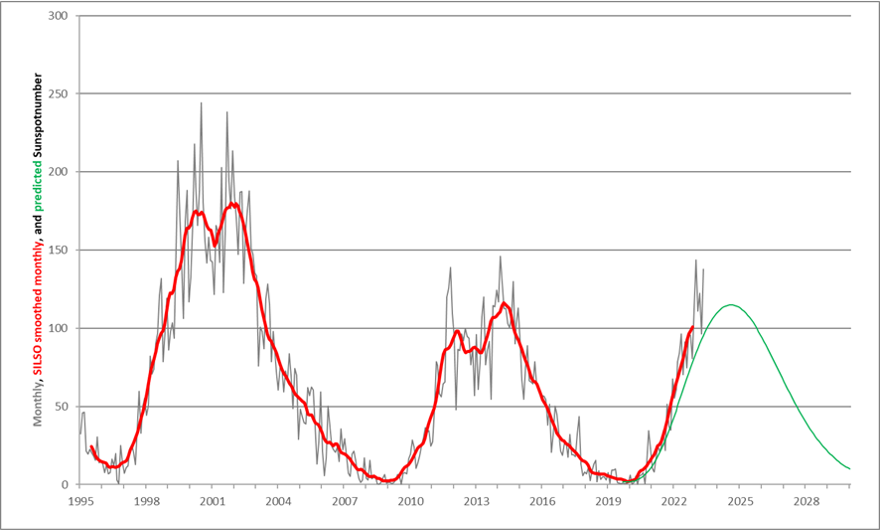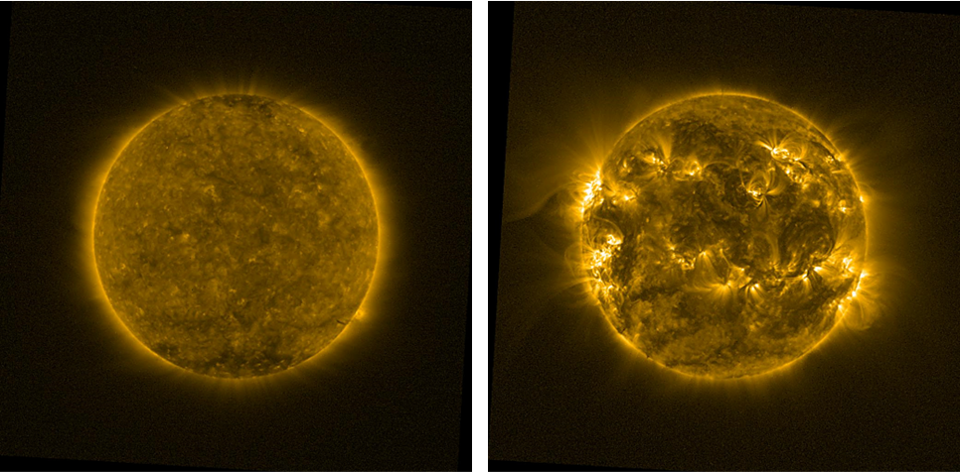The STCE's SC25 Tracking page has been updated to reflect the latest evolution in some critical space weather parameters for the ongoing solar cycle 25 (SC25), from sunspot numbers over geomagnetic indices all the way to cosmic rays. The multiple graphs allow for a comparison with previous solar cycles at similar stages in their evolution.
Solar activity remained at the enhanced levels already recorded in December 2022 and January 2023. The provisional monthly sunspot number reached values between about 100 and 140 (SILSO), reminiscent of the previous solar cycle maximum. Based on this surge in solar activity, the Solar Cycle Science webpage now gives a maximum for SC25 around 135 In October 2024 (best fitting curve for a single maximum). The results from the SILSO prediction methodologies (12-month window) are somewhat diverging, but favor sunspot numbers well above the ones initially predicted by the SC25 panel, i.e. well above 115. These numbers can change further pending the evolution of solar activity in the coming months. Also, there's still a good possibility that SC25 may have a similar outlook as SC24, i.e. with 2 moderate, well-separated maxima.

The increase in sunspot numbers was accompanied by a corresponding enhancement in other solar parameters, such as the solar radio flux and the number of solar flares. Also the number of coronal mass ejections (CME) was near an average of 6/day. The February to April 2023 period saw some important geomagnetic storms. A strong geomagnetic storm on 26-27 February 2023 affected drilling operations in Manitoba, Canada. The severe storms from 23-24 March (Dst = -163 nT) and 23-24 April (Dst = -212 nT) resulted in spectacular aurora and also impacted some GNSS applications. The April storm was the strongest since the famous St-Patrick Day's event of 17 March 2015. The images underneath show the Sun in extreme ultraviolet, as pictured by the PROBA2/SWAP instrument. Both images were taken on 10 February, but the one to the left dates from 2020 near solar cycle minimum, while the one to the right was taken in 2023 and exemplifies the increased solar activity that has been observed during the last few months.






